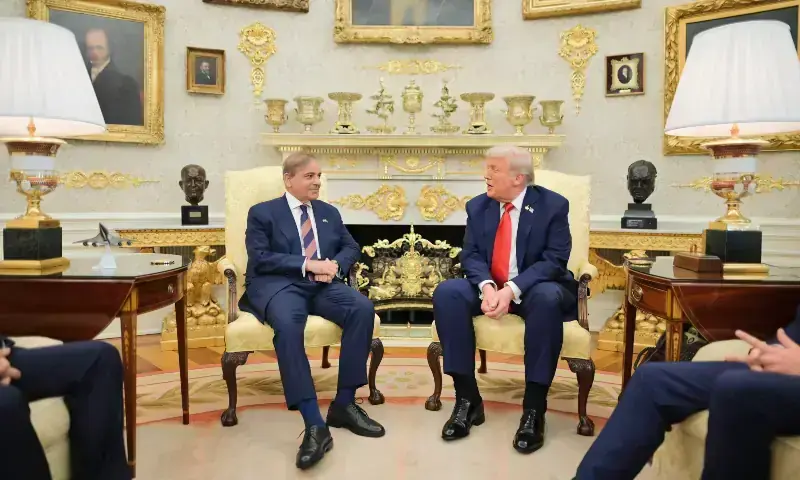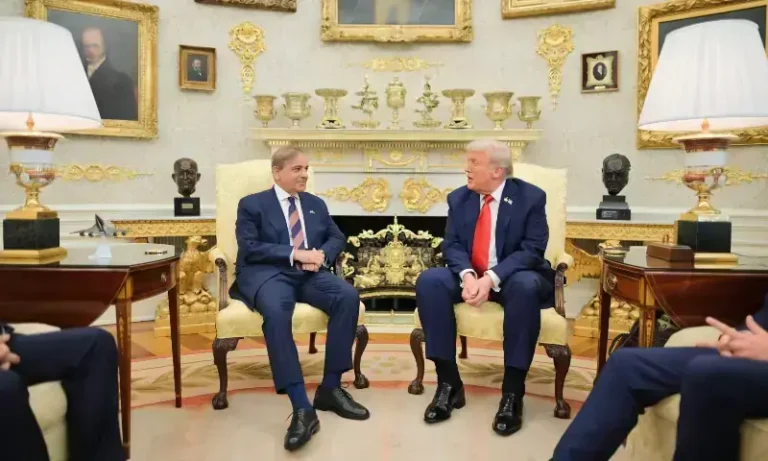
Pakistan’s energy landscape remains burdened by circular debt, stranded capacity, and excessive reliance on imported fuel. These structural flaws deepen economic fragility and expose the limits of stopgap solutions. The answer may lie not in the next megaproject or short-term tariff adjustment, but in the next generation of nuclear technology — micro and small modular reactors (SMRs) capable of delivering reliable, clean, and decentralised power.
For once, diplomacy and energy may align. The recent warming in relations with the Trump administration provides Pakistan with an opportunity to reset its energy diplomacy. Instead of seeking aid or debt relief, Islamabad could aim for a strategic energy partnership centred on advanced microreactors — turning goodwill into tangible infrastructure.
Unlike the unwieldy nuclear projects of the past, SMRs are compact, factory-built units designed for rapid deployment and modular scaling. A single 10MW microreactor can power an industrial cluster or a remote district; several units linked together can support an entire urban grid. In a country where blackouts routinely cripple productivity, such flexibility could prove transformative.
Washington’s renewed interest in Pakistan — driven partly by its desire to counterbalance China and restore strategic influence in South Asia — could provide an avenue for collaboration. If Islamabad plays its cards wisely, it could secure long-term fuel supply contracts, regulatory cooperation, and access to cutting-edge modular designs, much like agreements being negotiated with allies such as Canada and Poland.
A trilateral model involving American technology, Chinese construction expertise, and Pakistani oversight could share risk while balancing strategic interests for small and micro modular radiators
The technology itself has matured significantly. US-based NuScale Power received final approval for its 77 MWe reactor design in 2025, the first fully certified SMR of its kind. Its modules, factory-fabricated and shipped for assembly, promise construction timelines measured in months rather than years. GE Hitachi’s BWRX-300, a 300 MWe unit using simplified boiling-water technology, is already being deployed in North America and Europe.
Westinghouse’s eVinci microreactor — a transportable, five-megawatt “nuclear battery” — can operate for up to eight years without refuelling, tailored for remote industrial or military applications. Last Energy, a US-European startup, takes this concept further with “power plants in a box”, designed for serial production and rapid installation.
Bill Gates, in his October 3, 2025 article “The Future of Energy is Subatomic” on Gates Notes, highlights TerraPower’s Natrium reactor in Kemmerer, Wyoming, a 345 MW sodium-cooled fast reactor replacing a retiring coal plant. Mr Gates underscores that such reactors provide consistent baseload power, integrate with renewables, produce far less waste, and significantly reduce accident risk compared with legacy plants. His advocacy reinforces that small modular reactors are not theoretical but viable, near-term technologies with global precedent — a lesson Pakistan can apply.
Critics often highlight the high upfront cost of nuclear power. While a single microreactor may cost $5–6 million per megawatt, modular construction changes the equation. Factory standardisation reduces site-specific risk, shortens build times, and cuts labour costs. By contrast, utility-scale solar plants typically cost $0.8–1m per megawatt to install, but their intermittent output requires expensive storage or backup to deliver 24/7 power, often doubling or tripling the effective cost per megawatt.
Microreactors generate reliable baseload power on roughly one-thirtieth of the land area required for solar power and consume far less water than conventional thermal plants, thereby easing environmental stress in arid regions like southern Pakistan. When factoring storage, transmission losses, and land constraints, the effective cost of dependable solar approaches or even exceeds that of a factory-built microreactor.
For Pakistan, the financial logic extends beyond generation costs.
Microreactors can displace expensive imported LNG and furnace oil while minimising transmission losses by being sited near consumption hubs. The economic multiplier from industrial uptime, job creation, and localised power reliability may outweigh initial expenditures.
Financing remains the key challenge. Western private investment in Pakistan’s nuclear sector has long been constrained by security and credit risk. Yet if Trump-era diplomacy opens the door to technology transfer and export-credit guarantees, US and allied investors could find a viable foothold. A trilateral model involving American technology, Chinese construction expertise, and Pakistani oversight could share risk while balancing strategic interests.
Public scepticism about nuclear energy — particularly radiation hazards — remains strong. However, research from the Organisation for Economic Cooperation and Development Nuclear Energy Agency and the US Department of Energy’s Idaho National Laboratory indicates that SMRs with TRISO fuel and passive safety systems can contain fission products even under extreme scenarios, thereby virtually eliminating the probability of large-scale releases.
The International Atomic Energy Agency classifies the accident risk of advanced reactors as being orders of magnitude lower than that of legacy systems. Microreactors still generate radioactive waste requiring careful lifecycle management, but sealed fuel cartridges can be removed, stored, or reprocessed under international supervision. Transparent monitoring and community engagement can address safety concerns before they escalate into political obstacles.
Pakistan’s nuclear establishment — particularly the Pakistan Atomic Energy Commission (PAEC) and Pakistan Nuclear Regulatory Authority — has decades of operational experience, though its regulatory culture is geared toward large, state-led plants.
Transitioning to modular reactors demands a lighter, adaptive framework: simplified licensing, digital oversight, and standardised safety validation. International cooperation, especially with the US Nuclear Regulatory Commission and the International Atomic Energy Agency, could accelerate this process.
Equally critical is human capital. Pakistan Institute of Engineering and Applied Sciences and Ghulam Ishaq Khan Institute of Engineering Sciences and Technology can lead specialised curricula for reactor operations, digital controls, and emergency response, ensuring a skilled workforce.
If Pakistan hesitates, it risks falling behind. The United Kingdom, Canada, and Finland have approved pilot SMR projects. Saudi Arabia and the UAE are exploring modular nuclear options for industrial decarbonisation. For Pakistan — facing energy scarcity and fiscal constraint — this is not just an opportunity but a necessity.
Micro nuclear reactors will not solve every problem. They require disciplined governance, transparent financing, and sustained political commitment. Yet pursued strategically, they could become the backbone of a cleaner, resilient, and self-reliant energy system.
Pakistan has the scientific expertise, industrial base, and — for the first time in years — a favourable diplomatic environment. By leveraging improved ties with Washington, incorporating lessons from global leaders like Bill Gates on SMRs, and combining that with pragmatic partnerships and regulatory foresight, Islamabad can turn promise into power.
Microreactors, once futuristic, may yet define Pakistan’s next leap — lighting cities, powering industries, and freeing the economy from the chains of energy insecurity.
The writer is the former head of Citigroup’s emerging markets investments and author of ‘The Gathering Storm’
Published in Dawn, The Business and Finance Weekly, October 13th, 2025

